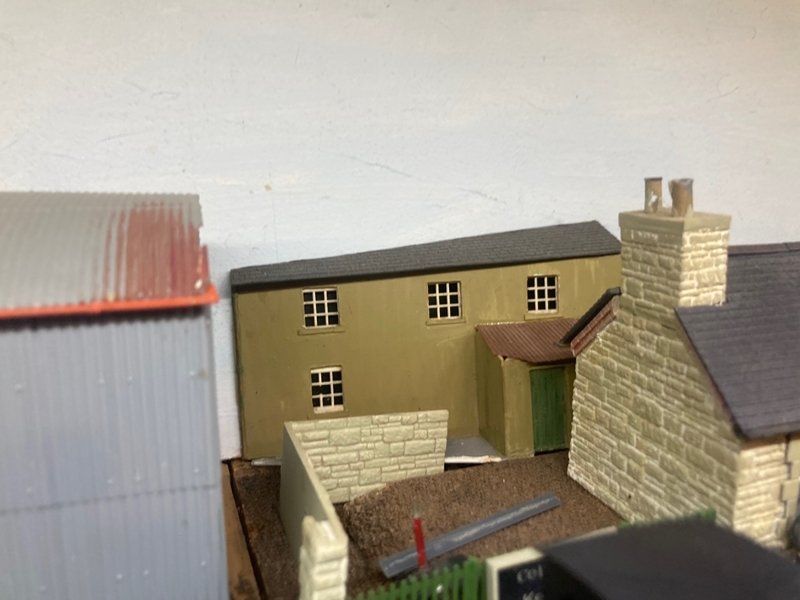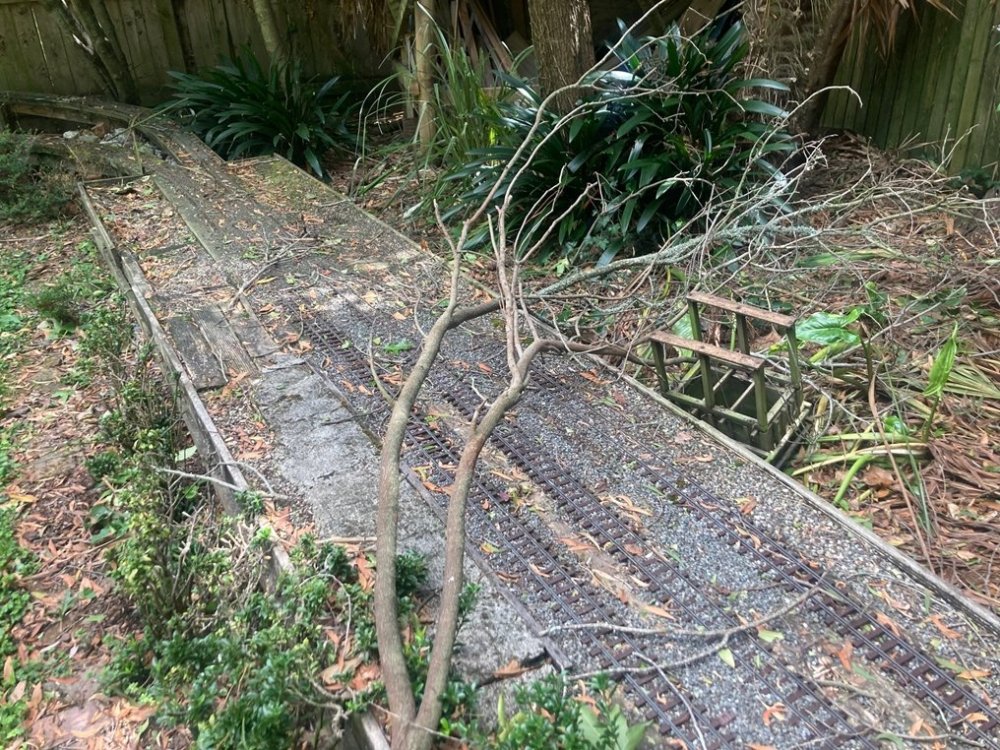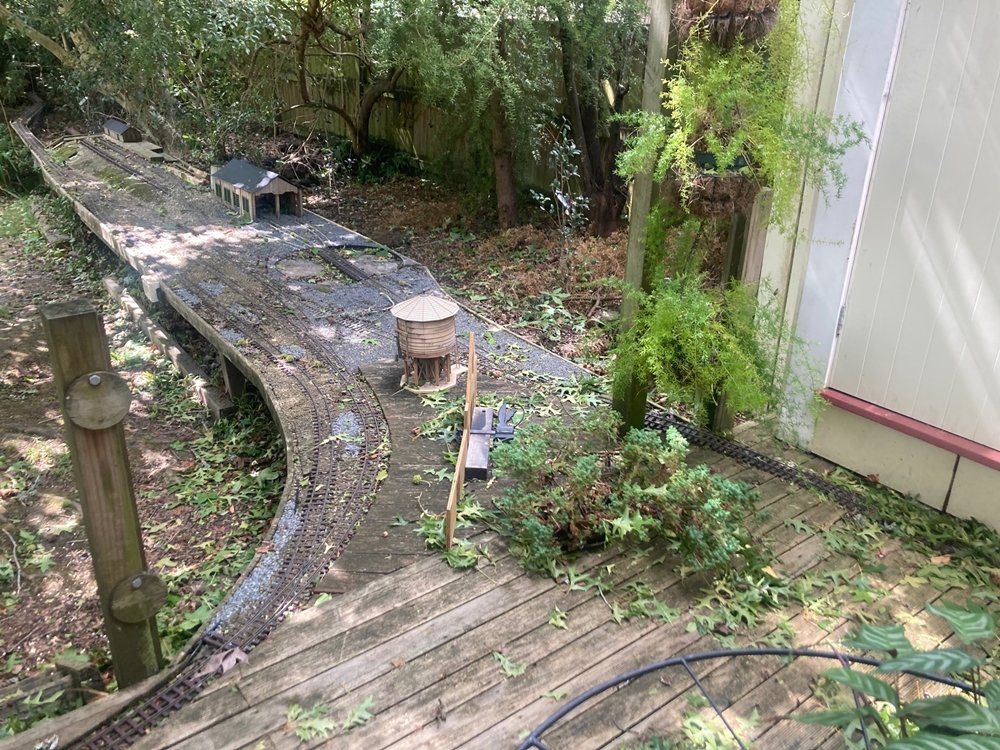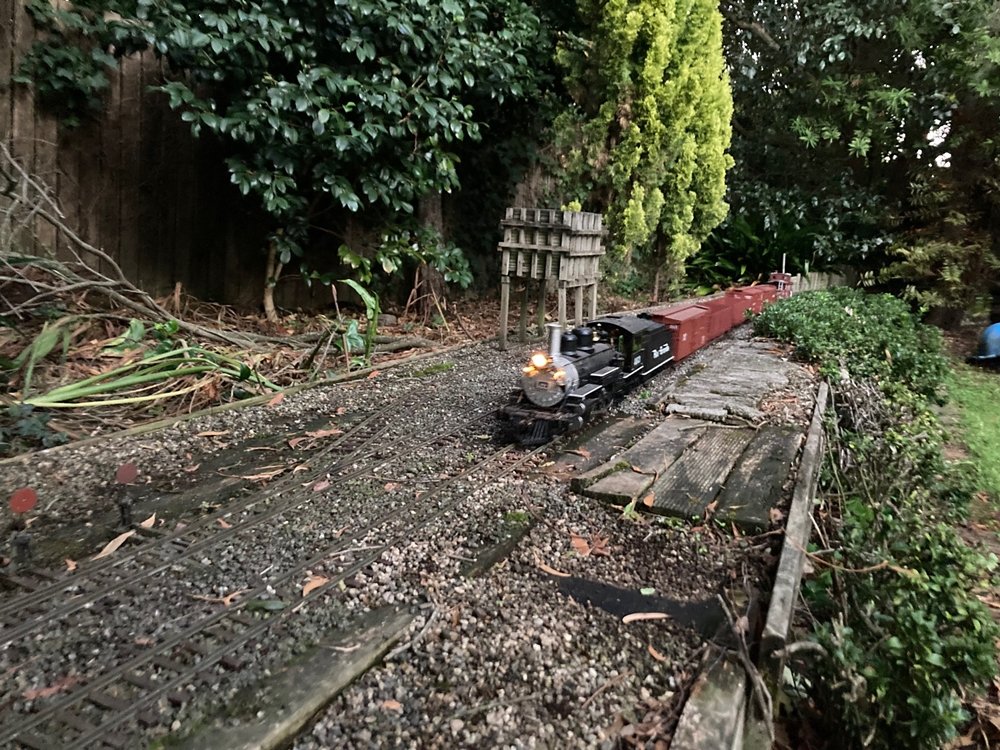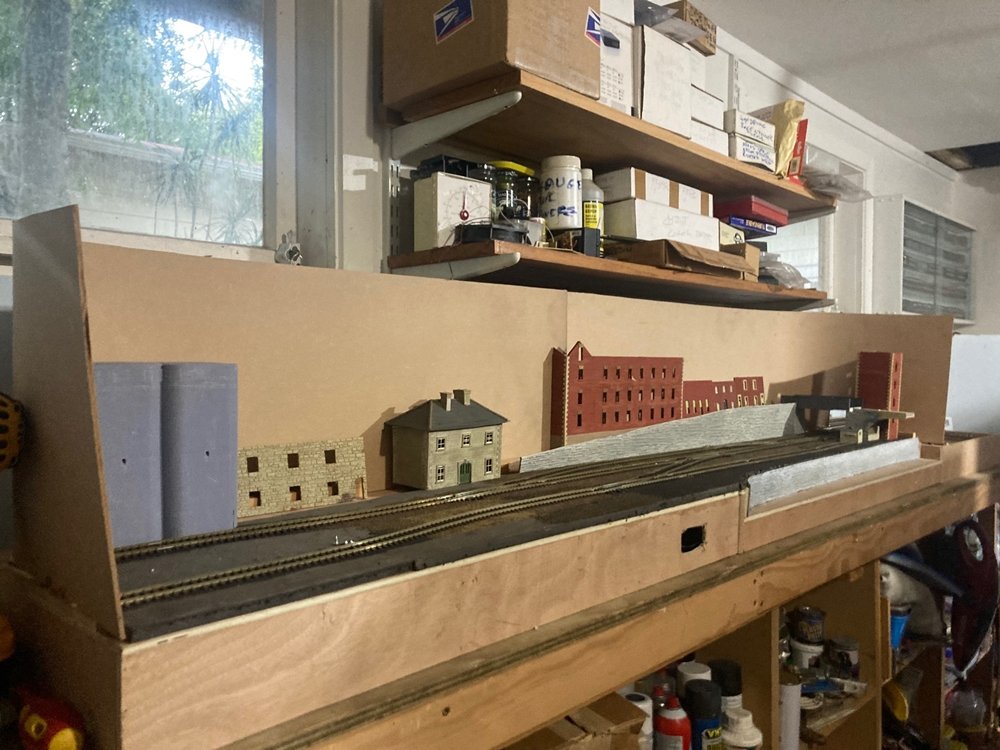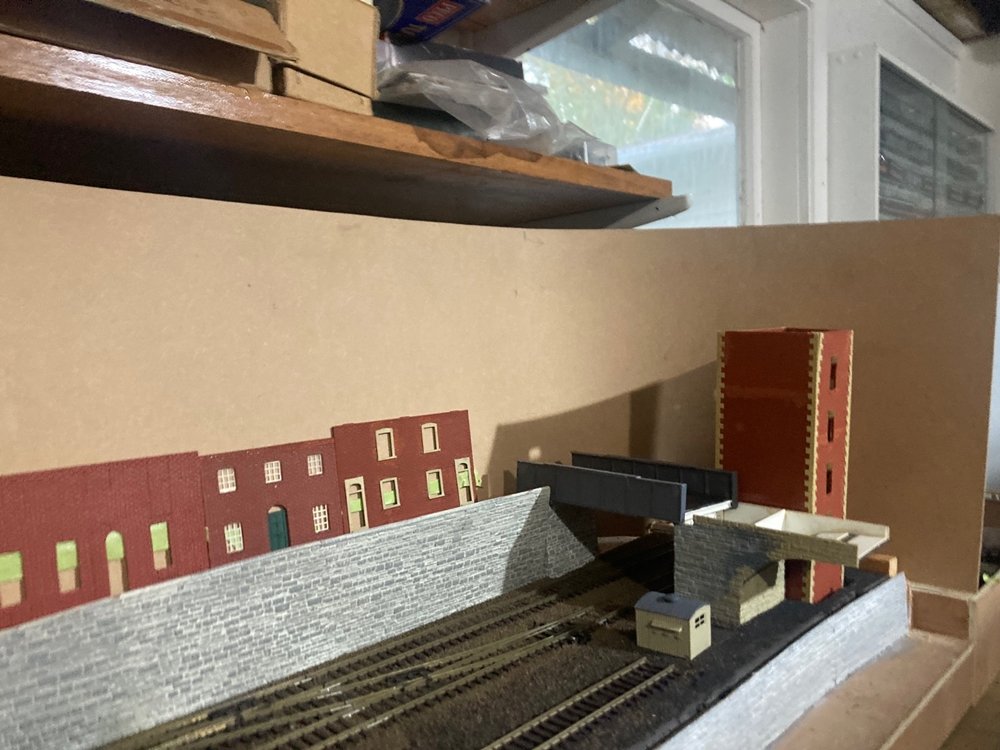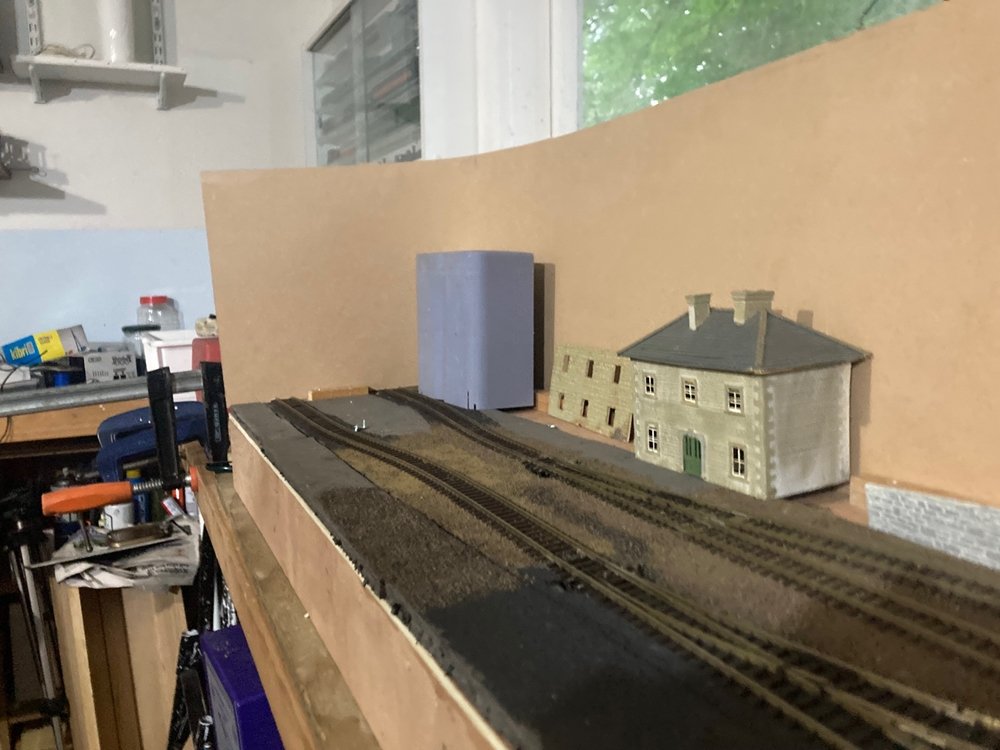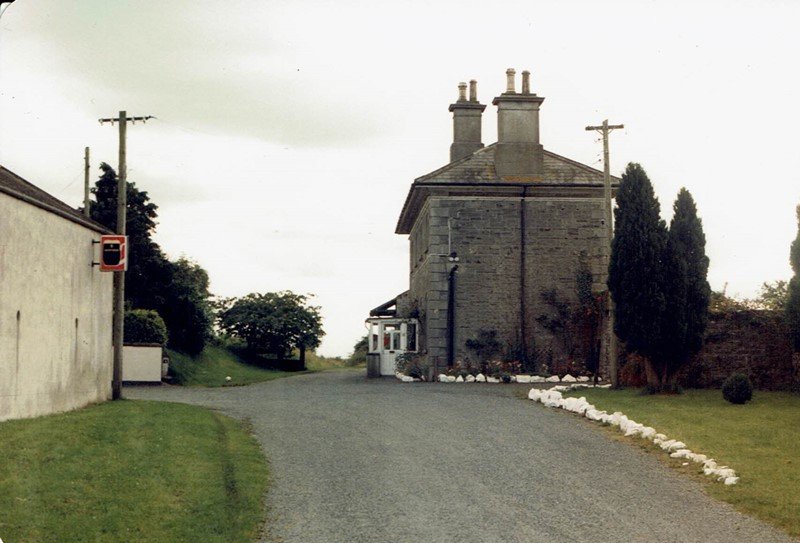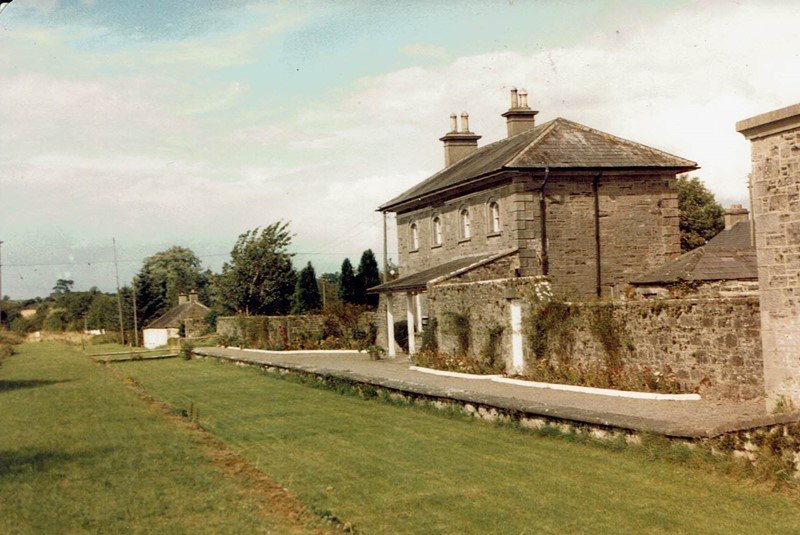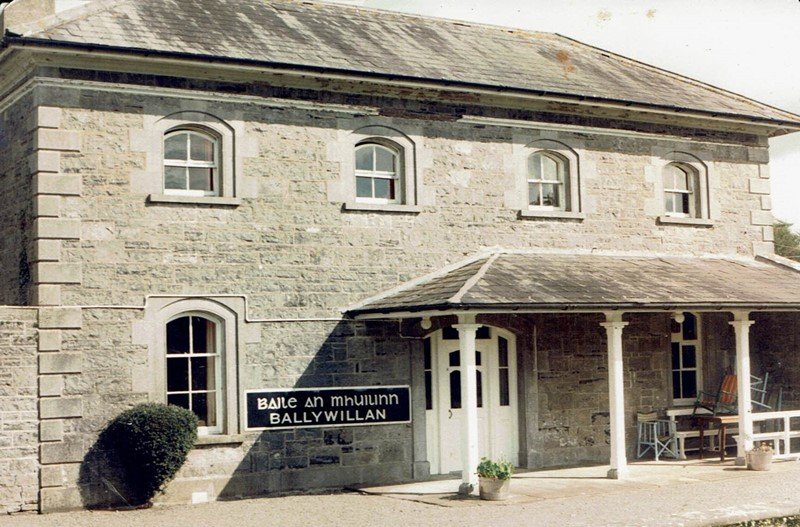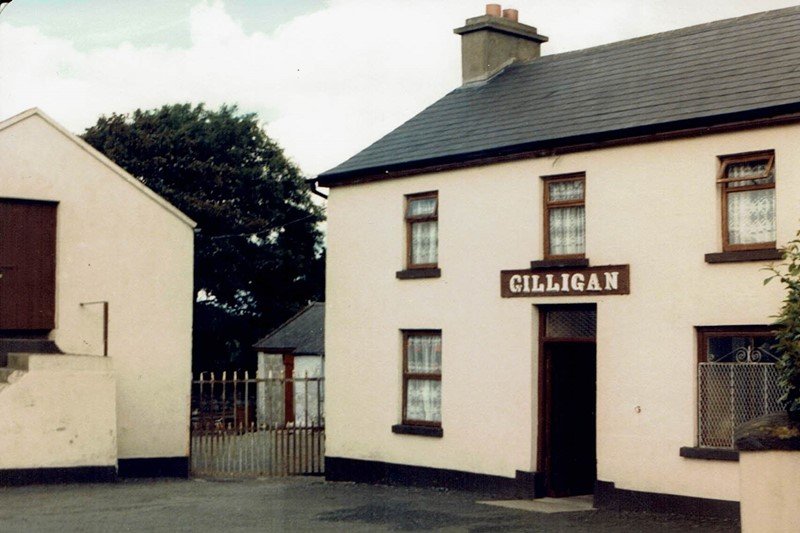-
Posts
4,878 -
Joined
-
Last visited
-
Days Won
119
Content Type
Profiles
Forums
Events
Gallery
Everything posted by Mayner
-
A lot was tied up with money & politics in particular the Irish Question or "killing Home Rule with kindness". The Balfour Government spent a lot of money in the 1890s building Light Railways and other Public Works in poorer areas to keep the Liberals and Irish Parliamentary Party out of Government. The Glenties and Killybegs Branches appear to have been locally promoted lines largely financed by Government Grants with £1000 in Baronial Guaranteed capital. There appear to have been proposals to extend the Glenties branch line to Ardara into the 1920s it would have been difficult to raise the capital locally or justify further Government Grants particularly under a Liberal Government that had secured Irish Parliamentary Party support. The WLWR line North of Tuam and GSWR "Kerry Branches" are further examples of railways funded by Government Grants The Clifden and Burtonport Lines were definite Government schemes took as direct a route as possible through remote country to their destination and avoided coastal populated areas the actual "Congested Districts" the railways were intended to support. In more prosperous inland counties railways were mainly financed by local capital sometimes with a Baronial Guarantee the 19th Century equivalent of a modern private public partnership where the ratepayers sometimes guaranteed a 5% dividend on capital and were responsible for making up operational losses, which lead to a lot of ratepayer resentment towards companies like the Cavan & Leitrim where extensions to Rooskey and the Arigna mines were blocked by ratepayer opposition. Another factor was that the railways were territorial, the GNR(I) Carrickmacross Branch blocked the MGWR extending northbound from Kingscourt to Armagh and potentially Cookstown and over the BNCR to Portrush. The SLNCR existed as an independent railway (buffer state?) to allow the GNR to compete with the MGWR/GSR/CIE for traffic from Sligo and the West of Ireland without invading each others territory, one of the explanations for the gap in the rail system between Sligo & Bundoran. In a lot of places the railways were content for drovers and carters to deliver to a railhead rather than finance or build a branch line, the MGWR had a depot and carter in Loughrea for many years before the local gentry raised the capital to build the Loughrea and Attymon Light Railway.
-
There were several narrow gauge Roadside Tramway and Light Railway schemes linking the villages and towns across the plains of North Galway and Central Roscommon to the Broad Gauge at Dromad, Roscommon and Woodlawn stations. The Roscommon Central Light Railway (Dromad-Strokestown-Roscommon with a branch from Strokestown to Carrick on Shannon------The Longford and Strokestown Tramway-----The Roscommon and Mount Bellew Steam Tramway-----The Woodlawn, Mount Bellew and Mount Talbot Tramway. The Roscommon Central promoters appear to have been serious the Light Railway application to the Privy Council failing on a technicality despite having appointed a contractor, Grand Jury support for a Baronial Guarantee. Dromad-Roscommon-Mountbellew was incorporated in various Ulster and Connaght Light Railway schemes for a continuous 3' gauge railway from Newry to Galway city and Connemara.
-
I think the Class 66 EMD Model JT42CUR introduced 1998 have a later (more reliable) version of the EMD 710 engine and more significantly are heavier with 'self steering bogies' https://writebetter.io/examples/radial+self-steering+bogies/ . Self Steering Bogies were introduced during the mid late 1990s on American high horsepower freight locos such as the EMD SD70Mac and EG Dash 9-44CW to reduce wear and adhesion on curves a single SD70 or Dash 9-44 was expected to do the work of 1-2 earlier 6 axle locos such as SD40-2. The 201s are EMD Model JT42 HCW JT---Twin cab 42---EMD loco type H--head end power C- 6 axle version W Standard to 5'6" gauge The CUR suffix on the Class 66 JT42CUR likely to be C-6 axle version U meter to 5'6" gauge bogies R---Radial bogie?
-
Its an interesting topic, while many of Rice's schemes were fictitious or freelance in concept, the majority of the responses have looked to the prototype for examples. A lot depends of what you want out of a layout and the available space, its sometimes its easier to fit a OO gauge double tracked main layout into a smaller space than a finescale single tracked terminus. One concept could be a compact Cyril Freezer style double tracked layout with two stations (one a through terminus of Junction) and short 3-4 coach trains based on Irish Main Line practice, each line with its distinct architectural style and character Pre-DART Dublin suburban with a simplified model of Dunlaoire, Seapoint or Blackrock or pre-CTC Cork Line with its distinct sky signals and double pole runs Hazlehatch, or Sallins as center of interest and Straffan, the Midland with the Royal Canal on the climb from North Wall to Clonsilla, Cork-Cobh with its riverside running, wet cuttings bridges and small halts had more in common with a rustic branch line than a busy suburban. The might of been are almost countless from the early Railway Mania schemes to build Trunk Lines from Dublin to Valencia, Dublin to Enniskillen, rival Dublin-Belfast schemes, to the last days of Empire with the "All Red Route" from the United Kingdom to Canada and perhaps overland to the East via Belmullet to the more humble such as the Mullingar and Ballymahon Tramway, plans to revive and extend the Parsonstown and Portumna to Loughrea and an extension of the Dublin and Blessington to Holywood and across the Wicklow Gap to Glendalough and Rathdrum.
-

GNR built coaches that passed to the UTA?
Mayner replied to Lambeg man's question in Questions & Answers
Masonite is a US trade name for Tempered Hardboard, which would have fitted in with wartime & GNR(I) economy measures. Michael Baker described the relatively poor condition of the bodywork on recently withdrawn ex-GNR coaches in an early 1970s magazine article or book on CIE. The GNR(I) appears to have used softwood framing in combination with hardboard paneling during and possibly following the War which would have lead to the relatively short life of modern GNR coaching stock. Its possible the GSR re-paneled a pair of C&L Narrow Gauge coaches with a similar material in the late 1930s, the re-paneled bodies were not fit for the Leitrim weather the material was described as compressed cardboard. https://en.wikipedia.org/wiki/Masonite. -
I have been using battery RC on the garden railway for several years, the main advantage is reliability in operation no problems with poor power conductivity outdoors and eliminating the need for wiring. The main issues issue are the "Cottage Industry" nature of railway battery RC manufacture since Aristocraft ceased manufacture in 2013 and relatively short battery life. Aristocraft manufactured the "Crest" battery RC system which was basically the "standard" with a range of transmitters, receivers, batteries and switchgear for American outline battery RC. The 'cottage industry" manufacturers are basically at the mercy of the component manufacturers, which can be challenging if you are trying to standardise on transmitter (Throttle/Hand Held controller) and receivers. (decoders in DCC Terms). I began using RCS an Australian https://www.rcs-rc.com/ manufacture about 7 years ago and currently have 8 battery powered RC locos with 6 different receiver types and 5 Transmitters of 4 different types as earlier transmitter and receivers became obsolete and were no longer available. I use twin 7.2V 1600mh/a NiMH racing car battery packs in locos which were generally good for 1 hour running when fully charged, but have had to replace battery packs after 2-3 years as they batterys struggle to hold a charge or get a train home. I am likely to stick with Analog track power for my kit and scratch built 4mm Irish locos when they are not on the workbench or in the display case
-

PRE-GROUPING AND GSR COACHES IN THE CIE ERA FOR MODELLERS
Mayner replied to jhb171achill's topic in General Chat
The most striking things is the introduction of the Irish Pullman cars so soon after the end of the Civil War and formation of the GSR and the involvement of the Free State Government (Tourism), Pullman Company, Railways and Shipping companies to promote tourism in the newly established Irish Free State. Its possible that MGWR and GSWR senior management may have been involved in the project in the lead up to the Amalgamation and 1924 establishment of the GSR With the GSR Chairman and several Senior Officers (financial and operating) were drawn from the MGWR the Pullman Cars almost appear to be a Midland rather than a GSWR initiative which fitted in with the Midland's almost Patrician approach with a high standard of 1st Class Passenger accommodation on trains like the Galway Mails and rather spartan 3rd Class accommodation. The GSWR and the GSR also operated a "Tourist Train" made up of modern (GSWR) side corridor bogies coaches hauled by highly polished 400 Class 4-6-0s. While "modern" GSWR/early GSR coaches with low running boards and individual compartment doors look antiquated compared to flush sided Stanier and Bredin coaches, they are not dissimilar to contemporary Midland and LMS coaches which were considered pretty much state of the art during the early 1920s. -

Ernies Massive Irish 1930's to 2005 Photo Archive
Mayner replied to Glenderg's topic in Photos & Videos of the Prototype
The big skyscape and the neat intensively worked farms definitely has a Dutch, north German look to it. I was struck by the intense nature of dairy farming and prosperity along the fertile coastal strip between Kilkee and Lahinch in contrast to North Clare when I visited Ireland in 2018 not as I remembered it as a teenager on holidays in the 70s. Though it was good to see Moyasta other remains of a railway that had become barely relevant by the 1950s -
I always liked Cahirciveen mainly because of its compact nature and scenic location with a lot of trackwork crammed in between the level crossing and the high ground at the Valencia end of the station. I am surprised that Jim Harrison or Iain Rice did not come up with a West Country, Welsh, Scottish version's. Cahirciveen certainly had elements of Tor Point or Craig about it with the station hemmed in between the sea wall with the town as a scenic background, the line to Valencia Harbour could be treated as staging or a fictitious goods only "Harbour Branch". I suppose I could do a Rice and use Cahirciveen as the inspiration for an EM or P4 light railway station and harbour branch some place in South West Scotland, the Llýn Peninsula or remote part of the East Anglian coast. .
-
I spent a year in Scotland about 30 years ago and spent most of my spare time exploring the country and railway system including the West Highland, including travelling from Glasgow to Forth William and Mallaig by rail and driving from Stirling. Its quite an experience making the journey at this time of year, I once took a day trip from Stirling to Crianlarich out by Callander and home via Lough Tay and Perth to "see the snow" people were out skiing in the valley below Lough Tay, I managed to home safely just before a sudden thaw that disrupted road and rail communication in the Central Lowlands knocking out the Stirling-Perth Main Line for the best part of When I lived in London some work colleagues would take the "Sleeper" on a Friday evening to Rannoch Station for a weekend in the great outdoors before returning to work refreshed on a Monday morning Its nice to see that the Bridge of Orchy station and the trains appear to be relatively unchanged from 1993!
-

Ernies Massive Irish 1930's to 2005 Photo Archive
Mayner replied to Glenderg's topic in Photos & Videos of the Prototype
The "Disreputable Wagon" is probably an ex GSWR or ex GNR replacement for recently withdrawn ex MGWR Meat Vans used for 'perishable" traffic, its possible the fitted "Green H Vans" replaced pre-amalgamation stock for this traffic. There is a 1964 H C Casserley photo of B149 leading the UP Night Mail through Ballysodare the train is made up of a Black & Tan 4w Heating and Luggage Van, what appears to be an ex-GSWR Bogie Coach and Bogie Mail Van in late 1950s green followed by three fitted H Vans (no goods brake). Ex-MGWR Meat Vans appear to have been use possibly for fish traffic from Sligo and Ballina into the mid/late 1950s 655 is probably acting as station pilot making up or breaking down a Mail Train. There are similar 1956 (F W Shuttleworth) photos of 659 shunting the Sligo Mail which included a MGWR 6w Mail Van & Meat Van dating from the 1880s sandwiched between a pair of recently introduced Bullied 4w Passenger Vans. The Shuttleworth photos inspired me to produce kits of CIE & MGWR non-passenger stock. -
For many years Studio Scale Models have produced high quality kits of both the GSWR & MGWR Convertible wagons. SSM also produce the timber underframe version of the GSWR/GSR/GNR(I)/CIE open wagon MGWR Standard Covered Wagon on left GSWR version on right. These kits are reasonably simple to assemble using superglue or epoxy for modellers who have not mastered soldering
-
Great collection, a great example of what could be achieved with MTK and DC kits and scratchbuilding in plasticard, that Bombay EMU is definitely fits into the something completely different category I have a soft spot for the older Southern Region EMUs & DEMUs from weekend day trips around London during the late 80s the sheer variety of stock and level of intensity of operation was an eye opener for someone who thought the lines out of Connolly Station were busy
-
Just the two photos in my 17th Feb post, the modern addition appears to have been built in what used to be a walled garden. Its nice to see that the original farm yard and buildings appear largely un-altered. Longford County Council should have the planning/building consent application including drawings for the new extension and alterations to the existing buildings. The model was intended to be part of a 'view blocker" to a fiddle yard, the rear of the building is freelance and has since been butchered into two low relief buildings on Keadue my Irish 3' Gauge layout Inspired by "Gilligan's" I built the model about 30 years ago using Wills Scenic materials, but still need to complete 'bed in' the models on the current layout/diorama.
-
The most striking thing about the station is the sheer scale of the buildings despite the purely rural location, Granard would have been a reasonable sized town/rural service center when the railway was built Castlepollard and Ballyjamesduff are of a similar size and would have performed a similar function. I seem to have developed a similar obsession with approximately 15 photos of the station, 1 each of Float and Drumhownagh and half a dozen from Crossdoney. The big attraction was the almost complete and un-spoilt nature of the site, the main thing missing being the track and signals It looks like Ballywillian was the railhead for a large area of South Cavan and North Westmeath with the MGWR using carters. There may have been competition between the Midland at Ballywillan and the GNR (at Oldcastle) for traffic from Ballyjamesduff and the area around Lough Sheelin. Another source of traffic under Midland ownership was ballast trains from a Gravel Pit at Derryard to the south of Lough Kinlane. The pit was served bay a short branch off the "Main Line" but probably have closed after the Midland began using crushed limestone ballast from Lecarrow Co Roscommon during the early 1900s.
-
Funnily enough I took a photo from much the same view point all those years year ago! Lough Sheelin and the distant hills would make an excellent backdrop with the land in the foreground dropping gently towards the railway and the lake, something that's reasonably achievable in a moderate space in 2mm but not really workable in 4mm or the larger scales unless you have a double garage or a Ball/Billard Room in an old Country House
-
Great to see Irish architectural and landscape modelling on such a grand scale, where N/2mm scale comes into its own perhaps an Irish Chiltern Green
-
After a very dry and hot January we were hit by the tail end of Cyclone Dovi last week which brought down trees and blocked roads. it did not do too much damage to the railway apart form bringing down a branch of a Tasmanian Blackwood (which had been suffering from drought) and knocking over the Utah Junction coal tipple. I removed the station building and water tower before the storm. The ironical thing is that the Blackwood has established itself as a replacement for a large Gum Tree that had fallen over about 15 years ago when the ground became saturated as a result of heavy rain Some debris on the deck but fortunately nothing fell on the loco shed or water tower. A week later services restored and tipple replaced, I still need to cut up and the fallen branches.
-
I finally got around to starting work on the backscene having done nothing with the layout since late December. I have a pattern of loosing interest in a layout once I complete tracklaying and wiring having gone through the same pattern on at least different layouts in different scales and gauges, even if the run reliably! The backscene is in 4mm MDF screw fixed to strip wood runners fixed to the baseboard surface, I prefer curved corners and pre-curved the corners by bending and clamping for a week before fitting to the baseboards. I am planning to go for a 'staged' effect with wings/view blockers at either end, with a fascia and a lighting pelmet the 'Wings" will help keep the ends of the backscene vertical and act as view blockers at either end of the layout. The Backscene will help support the retaining wall and low relief background buildings. The backscene will be mainly sky possibly with some background buildings. The layout is intended to fit in an office bookshelf. The "Wings" should cut off the view of the Tower Building end of the dock I still need to finalise the buildings and structures at this end, whether to go for a 'modern" 1930s concrete grain elevator typically found at ports or a hotchpotch of modern and older structures that existed at Ballysodare.
- 56 replies
-
- 10
-

-
Some DCC and analogue sound systems still use cams or reed switches to synchronise steam loco chuff rate, my large scale sound equipped steam locos use reed switches actuated by small magnets fitted to a tender axle, which results in an embarrassing silence when a loco starts to slip, I fitted the magnets and reed switch to a driving loco on one loco but it tends to stall rather than slip when overloaded. I remember seeing a few PMF fitted layouts at shows during the 80s and 90s the overall impression was that there was more going on on the "sound desk" than on the layout. Soundtraxx a DCC sound pioneer developed a "Surround Sound" system https://soundtraxx.com/products/surroundtraxx thats based on the principal of using a sound system or layout mounted speakers, its intended to interface with Digitrax Loconet comms, Block Detection and Transponder Decoder systems, requiring a lot of pre-planning and resulting in nearly as much wiring and hardware as a full size railway block detection and signalling system not exactly a budget sound system. Although an early user of DDC sound (HO & On30--circa 2022) I am well over the novelty and most of my sound equipped locos are set to run on "mute." I have surround sound in the garden with wind, birdsong, animal and human noises and the sound of an occasional freight train in the background which used to be fun in the early days when I still ran diesel.
-
I used JMRI (on an old laptop) interfaced with a Digitrax Command Station for route setting on an American N & G Gauges layout occasionally using the throttle function to control locos. The main attraction was the ability to build a reasonably authentic looking American style CTC panel and that JMRI is free! Point motors were controlled by Lenz stationary decoders, but I never got round to installing signalling or detection. The Sprog seems to be a reasonably low cost hardware interface between the layout and the JMRI programme https://www.jmri.org/help/en/html/hardware/sprog/SPROG.shtml
-
A day trip 37 years ago. Gilligan's Farm Yard and Pub on the left, classical Wilkinson MGWR station house on the right. Ballywillan wasn't a passing place for passenger trains the loop served a cattle bank.
-
Like David and Galteemore I get a lot more enjoyment out of building models than collecting and running rtr, but I get a tremendous kick out of operating freight trains. I was a fairly early entrant to DCC with a fairly large American N gauge layout in 98-99 when it was necessary to first mill a recess in the chassis and then hard wire a decoder I ended up shorting and blowing up quite a few decoders as still have most of my N gauge loco collection complete with hard wired decoders though I they haven't run in about 10 years probably holding them in case we have to downsize to a smaller house. I still use the original Digitrax command stations, though I replaced the original 1999 throttle with something slightly more up to date. The Digitrax Zephyr Express is a good starter set capable of expansion a reasonable long term investment I have no plans to convert my collection of 4mm kit built locos to DCC there is very good control with a Gaugemaster hand held and converting the locos to DCC is just not worth it, my MM 121s and IRM 001s are fitted with DCC but not really interested in the functions. Most of my large scale G Gauge American narrow gauge battery radio control locos are fitted with sound which does not come cheap and not the most realistic. I am not convinced sound is worth it having tried and spent a lot of money on sound fitted locos in OO, O and G gauge I am not convinced its worth the expense. One or two sound fitted locos sound reasonably ok especially shunting , but for me several sound equipped locos is to much to take and I press the mute button.
-
I am not sure whether you mean home printers, imateriaiize Shapeways or all 3. Ken's DWWR wagons are produced on a readily available "Anycubic" SLA resin printer . imaterialise have a reputation of producing high quality prints including railway models. https://i.materialise.com/en/shop/item/basel-b4-1416-1506-unterteil?category=scale-models&subcategory=&sortBy=interesting&pageNumber=6&pageSize=18&index=22 With Shapeways quality of finish depends on the material selected and the application. their SLA reins should be capable of producing a similar standard of detail and surface finish to an injection molded model but at a significantly higher cost compared to their other materials.https://www.shapeways.com/blog/archives/39838-introducing-three-tough-sla-plastic-materials.html The main reason most 4mm and larger railway models on the Shapeways site are only available in their "White Natural Plastic" plastic is to keep the price down while some people may pay over $61 for a MGWR coach body shell its doubtful that many people would be prepared to pay more than that amount for an SLA print of the model. https://www.shapeways.com/product/TJEMWN8JF/0-64-mgwr-6w-3rd-class-coach?optionId=96464128&li=marketplace imaterialise looks like a better option than Shapeways for someone starting out in 3D modelling or who is unable to afford or justify the cost of buying, maintaining and running a SLA printer
-
As a manufacturer I don't see 3D printing as a viable proposition for low volume manufacture of rtr coaching stock or locos price point would have to be set 2-3 higher than a similar plastic injection model, this year will largely test whether rtr wagons are viable or not. Desktop printers for less than €1,000 are not up to it for commercial low volume production, your potentially looking at an investment of €60-70,000 for a suitable full size printer set up(printer, hazardous substance and temperature controls) for low volume manufacture of small scale railway models in a resin with similar characteristics to injection molded plastic The main challenge in volume production is in finding a printing bureau with the capability to produce high quality prints (in a suitable resin) or resin castings that is prepared to under take low volume production of small scale models that does not charge an arm and a leg. Some bureau charge a higher unit rate on larger orders (above 20 units) because of the labour intensive nature of the clean up process and high reject rate (breakages) with highly detailed small scale models. I am not convinced that there is sufficient demand out to produce detail components or coach, loco or wagon kits while demand for decorated rtr wagons has been reasonable, there has been very little demand for models in kit or CKD form. Designing 3D models (3D Modelling) involves a special skill set and access to software which does not exactly come cheap, although I am an experienced draftsperson and 2D designer I struggle to get my head round 3D Modelling and had to farm out the design of the 3D wagons to a professional 3D modeller. A home printer, iMaterialise or possibly Shapeways is probably the best option for producing one off models, though Shapeways charge an an arm and a leg for a resin print.
.png.c363cdf5c3fb7955cd92a55eb6dbbae0.png)






